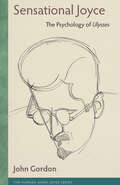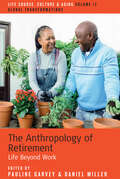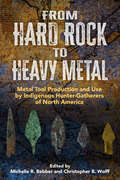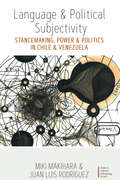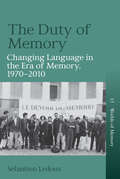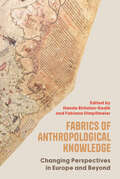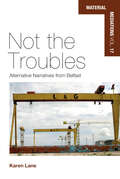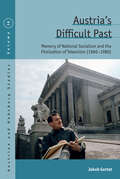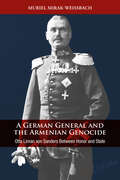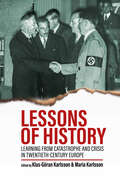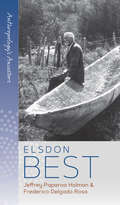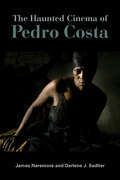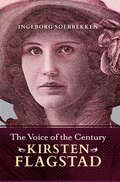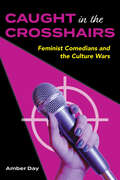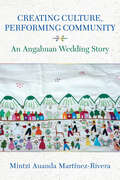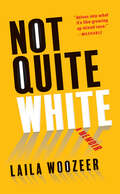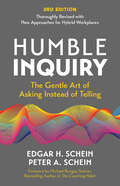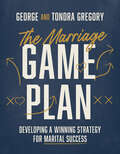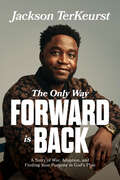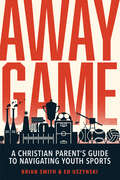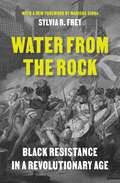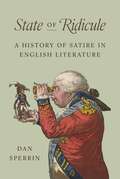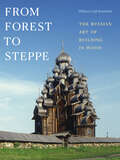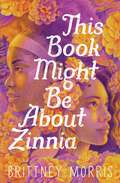- Table View
- List View
Sensational Joyce: The Psychology of Ulysses (The Florida James Joyce Series)
by John GordonExploring how Ulysses imitates the human mind at work, connecting close readings to psychological theories of Joyce’s time In this book, John Gordon uses historically oriented close readings to demonstrate that Ulysses is a book that mimics the workings of the human mind. Gordon highlights James Joyce’s exceptional ability to capture and represent lived experiences, showing how Joyce’s writings display the ways specific minds interact with their environments. Ulysses is portrayed here as having its own evolving consciousness. Sensational Joyce is the first book on Joyce’s psychology to engage deeply with theorists beyond Freud, Jung, or Lacan. Gordon explains how Joyce used other psychological theories, like William James’s ideas on stimulus and response, Gestalt psychology, John Watson’s behaviorism, and trauma research. The book also includes discussions of phenomena considered experimental at the time, such as telepathy, telekinesis, precognition, and spiritualism. Gordon examines the characters of sensitive intellectual Stephen Dedalus and advertising professional Leopold Bloom, following the book’s centers of consciousness into the visionary, hallucinatory, and prophetic final chapters. Gordon highlights how Joyce’s unique writing style transforms sensations and stimuli into thoughts and responses. As Ulysses progresses, the sensational—meaning sensory data—becomes sensationalistic. In tracing the contemporary theories of psychology evidenced in the novel, Sensational Joyce presents many new and original interpretations that can be applied to other works by Joyce, especially Finnegans Wake. A volume in the Florida James Joyce Series, edited by Sam Slote
Racing Uphill: Confronting a Life with Epilepsy
by Stacia KalinoskiThe candid, inspiring story of a woman&’s experience with a chronic, unpredictable neurological condition When twenty-nine-year-old reporter Stacia Kalinoski regained consciousness on a couch at the TV station where she worked, she assumed that she&’d had another seizure. But the electrical storm that had just torn through her brain was more destructive than she could have imagined, and the broadcast journalism career she loved swiftly came to an end. Forced to confront the reality of her medical condition, Kalinoski made the risky decision to undergo brain surgery, targeting the epilepsy that was ravaging her life. In Racing Uphill, Kalinoski describes the seizures that occurred while she was running, which led to her pursuit of an uncertain cure. Rallying the grit she developed as an athlete and engaging the research and reporting skills she acquired as a journalist, she gives us a rare inside look at the ways epilepsy can change a life. Moving beyond her own personal experience, Kalinoski interviews prominent epileptologists to understand how seizures can spread, steal memories, and create strange behaviors and mood disorders. She seamlessly joins what she learned from her research with her own story, offering valuable insight into the experience of grappling with a relentless neurological disease. The vivid auras that preceded seizures and the damage that followed; the toll of her epilepsy on her family and loved ones; the extraordinary determination her reckoning required—these are all part of Kalinoski&’s story of adversity, denial, acceptance, and resilience. In sharing the remarkable opportunity that epilepsy presented for her courage and growth, Stacia Kalinoski speaks to anyone facing an uphill battle and offers inspiration for taking control of one&’s own health.
The Anthropology of Retirement: Life Beyond Work (Life Course, Culture and Aging: Global Transformations)
by Daniel Miller Pauline GarveyAs a result of growing life expectancy, the period of retirement is likely to surpass the entire period of working life in many countries. There is little acknowledgement that retirement is not an event but an extended period of life that unfolds over several decades. Experiences vary considerably across the globe, from areas where most people cannot afford to retire to places where a multitude of new possibilities are being developed for retirees. This book is an anthropological approach to consider life beyond retirement in a wide range of contexts and consequences.
From Hard Rock to Heavy Metal: Metal Tool Production and Use by Indigenous Hunter-Gatherers of North America
by Christopher B. Wolff Michelle R. BebberThe discovery and development of metals as tool media is a topic of global interest. This phenomenon is generally associated with sedentary, agricultural societies; however, in North America metal use by hunter-gatherer populations began as early as 9,000 years ago and continued into modern times. The regional and cultural diversity of research in this volume contributes to how we conceptualize hunter-gatherer innovation, technological proficiency, and complex decision-making in the past. Readers are challenged to reconsider long-held assumptions about how, when, and under what conditions metal became a part of humanity’s story.
Language and Political Subjectivity: Stancemaking, Power and Politics in Chile and Venezuela (Studies in Linguistic Anthropology)
by Miki Makihara Juan L. RodríguezPolitics and power are understood as interconnected yet opposed forms of agency that do not exist without each other and depend on transgressions and the upholding of social boundaries. Language and Political Subjectivity is an ethnographic and historical piece of research that considers how Indigenous and diasporic communities, with their political subjectivities, expand over significant sociohistorical changes, debates, and struggles in the transformation of Chilean democracy and Venezuela’s Bolivarian Revolution. It offers an innovative approach to stancemaking as a rhetorical semiotic process that produces truth, beliefs, and certainties about social realities and relations.
The Duty of Memory: Changing Language in the Era of Memory, 1970 – 2010 (Worlds of Memory)
by Sébastien LedouxWithin France, the expression “duty of memory” (le devoir de mémoire)speaks to a complex and ever-evolving relationship with the past. Emerging in the 1970s, this term raised questions about memorialization which dominated public debates in the 1990s, highlighting France’s entanglements with colonialism and the Holocaust. Drawing on a variety of interviews, archival sources, and data surveys, author Sébastien Ledoux spotlights how the trajectory of this term offers a lens for understanding contemporary societies’ relationship with the past on a global scale.
Fabrics of Anthropological Knowledge: Changing Perspectives in Europe and Beyond
by Fabiana Dimpflmeier Hande Birkalan-GedikWeaving together a collection of original essays, this book looks at the transnational circulations of people, concepts and practices in anthropology, revealing the many ways that they cross borders. The essays focus on European anthropological traditions and beyond, including broader transnational interactions, to uncover the intricate fabrics of interconnected influences that have shaped anthropology. By presenting these diverse threads, the volume challenges the notion of singular, separated traditions of anthropology and demonstrates how the field has been shaped by a rich plurality of transnational connections, negotiations and entanglements in the past and today.
Not the Troubles: Alternative Narratives from Belfast (Material Mediations: People and Things in a World of Movement)
by Karen LaneBelfast is often analysed as a divided society, anchored in ethno-politico-religious differences amid a long history of conflict. However, shifting the focus of academic attention reveals a range of alternative narratives of city life. Using storytelling as a leitmotif, this ethnographic account explores the epistemological validity of engaging with strangers in a range of settings, such as street corners, a hairdresser’s and a storytelling evening. It considers how creative writers represent life in Belfast. The author employs a variety of methods, including a dog as a research assistant and storytelling on location which demonstrates how people can re-shape and re-narrate life in Belfast.
Austria's Difficult Past: Memory of National Socialism and the Filmization of Television (1960-1980) (Austrian and Habsburg Studies)
by Jakub Gortat GortatThe role played by film in reshaping Austria’s post-war national identity is often studied within narrow historical and geographical margins. Film history traditionally focuses on either the work of a sole director, German cinematography, or the immediate aftermath of World War II, and neglects the link that exists between historical television films and Austria’s distinct culture of remembrance. In Austria’s Difficult Past, Jakub Gortat addresses this gap by providing a comprehensive analysis of television films produced by Austrian (ORF) and German television studios between 1961 and 1980. In doing so, he explores the way films mediated the burden of memory and the legacy of Austria’s complicity in the Nazi regime.
A German General and the Armenian Genocide: Otto Liman von Sanders Between Honor and State
by Muriel Mirak-WeissbachThe legacy of the German General, Otto Liman von Sanders, remains highly contested in the history of twentieth-century Europe and the Middle East. Noted for leading the 5th Ottoman army’s successful defence of the Dardanelles and Gallipoli in 1915, his role in opposing the Young Turks’ genocide policy and safeguarding Greeks, Armenians, and Jews is overshadowed by his imprisonment for war crimes in 1919. In this enlightening reassessment of Liman von Sanders’ life, Muriel Mirak-Weissbach uses previously-unpublished archival materials to uncover new dimensions to this story and, in doing so, explores wider ethical questions concerning the role of the individual in global crises, the nature of morality in military conflict, and the limitations of justice.
Lessons of History: Learning from Catastrophe and Crisis in Twentieth-Century Europe
by Klas-Göran Karlsson and Maria KarlssonHistorical lessons are useful or even necessary for our guidance and orientation in time. These lessons, however, have often been overlooked in historical reflections on watershed moments, such as genocides, treaties, and global movements. Focusing on how cataclysmic events, primarily within Central and Eastern Europe, have been transmitted across borders and generations, this volume interrogates how the theory of historical lessons has evolved, ultimately providing a useful framework for understanding contemporary conflicts and issues. Spanning topics from the mediation of history within film to the influence of historical oppression on student activism, this volume re-evaluates historiography’s potential for analyzing the past and engaging with the present.
Elsdon Best (Anthropology's Ancestors)
by Jeffrey Paparoa Holman Frederico Delgado RosaNew Zealander ethnographer, Elsdon Best is a key figure in the history of anthropology due to his involuntary triggering of a fundamental and long-lasting anthropological debate on the Māori concept of hau. This volume is dedicated to this important scholar, who at the same time was shadowed by metropolitan anthropology and became an excluded ancestor, along with his Māori interlocutors and ethnographic collaborators. By recentering his place as one of anthropology’s ancestors, the volume contributes to a new perception of the discipline’s past.
The Haunted Cinema of Pedro Costa
by James Naremore Darlene J. SadlierFor over three decades, Portuguese director Pedro Costa has been widely admired for his unusual and innovative body of work, which has earned accolades and wide acclaim. The Haunted Cinema of Pedro Costa is the most complete treatment of his work, exploring Costa's feature films from Blood to Vitalina Varela, and from the documentaries to the short films, museum exhibitions, and the forthcoming Daughters of Fire. Authors James Naremore and Darlene J. Sadlier situate Costa within the history and culture of Portugal, at the same time providing insightful close readings and stylistic analysis of the films. Their work explores the unusual features of his artistry and illuminates his unique contribution to cinema. An accessible portrait of an important artist, The Haunted Cinema of Pedro Costa is an indispensable companion for scholars, students, and cinephiles everywhere.
The Voice of the Century: Kirsten Flagstad
by Ingeborg SolbrekkenIn 1935, the Norwegian soprano Kirsten Flagstad made her United States debut in a live radio broadcast that went across the country and made her an overnight success. Flagstad went on to enjoy an astounding career at the Metropolitan Opera, becoming one of the most well-known singers of the twentieth century.The Voice of the Century tells Flagstad's story–one of triumph and tragedy. The shy and stubborn Norwegian singer rescued the New York Metropolitan from bankruptcy in the 1930s, revitalizing interest in Richard Wagner's operas in the United States. She was also a sensation in Europe, performing at Covent Garden in London, at festivals in Zurich, and at La Scala in Milan. In music history, she is considered one of the foremost Wagner interpreters ever. Yet during and after the Second World War, a campaign to discredit her was launched by leading officials in the Norwegian Foreign Ministry, and she was unjustly accused of harboring Nazi sympathies, of singing to Hitler, and of profiting greatly from the war. This smear campaign resulted in major demonstrations at her performances in the United States. Her fortune was seized, and she had to live under police protection. Finally translated into English, this biography looks into the darkest corners of Norwegian intelligence history, scandals that jeopardized both the police and the prosecution's credibility. As creepy and riveting as any thriller, The Voice of the Century is a thoroughly documented account of how a foreign ministry organized a years-long persecution of a world-renowned female artist.
Caught in the Crosshairs: Feminist Comedians and the Culture Wars (Comedy & Culture)
by Amber DayThe landscape of comedy has undergone a seismic shift in recent years with an increasing number of female comedians breaking through to mainstream audiences. Women are claiming high-profile roles as late-night hosts, sketch comedians, television producers, and standup stars. As they disrupt industry norms and transgress cultural boundaries, they have also become lightning rods for controversy, eliciting flares of anger, amazement, revulsion, or hope.Caught in the Crosshairs delves not only into the work of feminist icons like Samantha Bee, Amy Schumer, Leslie Jones, Michelle Wolf, and Hannah Gadsby, but also into the discourse surrounding their comedy. Author Amber Day argues that these debates transcend mere entertainment; they are cultural battlegrounds for larger philosophical and political conflicts, interrogating ideals of gender, race, power, and public space. We see conflicts over what should be considered scandalous or beyond the pale, who should be in the intended audience, what is appropriate behavior for which performing bodies, and what the boundaries of comedy ultimately are. Caught in the Crosshairs is an examination of how feminist comedy reflects the tensions of our times, disrupting established narratives and challenging traditional power structures.
Creating Culture, Performing Community: An Angahuan Wedding Story (Underground Cultures)
by Mintzi Auanda Martínez-RiveraCreating Culture, Performing Community explores the ways in which the people of Santo Santiago de Angahuan, a P'urhépecha community in the state of Michoacán, México, create and curate their cultural practices and how, by doing so, they perform what it means to be an active member of the P'urhépecha community. Through a deep ethnographic account of ritual practices, author Mintzi Auanda Martínez-Rivera focuses on the tembuchakua, or wedding rituals, analyzing their creation, performance, and transformation within the P'urhépecha community. By proposing alternative approaches to understanding indigeneity, Martínez-Rivera showcases how people carefully transform their cultural practices and rearticulate and perform their identities.Thus Creating Culture, Performing Community has three main aims: to analyze how people create their own culture; to showcase how cultural practices are performed to reflect particular ideas of what it means to be a member of a community; and to move beyond limited understandings of indigenous identity and cultural practices.
Not Quite White: A Memoir
by Laila WoozeerNeither here, nor there; neither one, nor the other. What does it feel like to be an indescribable shade somewhere in between? Can you even exist in a binary world that seems so black-and-white? Why is there no easy way to describe someone who is a Welsh-French-Scottish-American-Indian-Mauritian?Laila Woozeer, a mixed-race 28-year-old London-born writer and musician, shares a personal story of growing up in a rural white village in North Wales. Laila takes readers on a funny, vivid, and profoundly moving journey of discovering one's own identity and belonging through her travels between Mauritius, the US, and the UK, to make sense of the world and one's place within it. This is the real-life story of Laila Woozeer trying desperately to understand how to exist, how to survive, and what it might mean to thrive. From childhood memories of self-discovery to an identity crisis of adolescence, to a misunderstood existence in adult life, Not Quite White charts Laila's struggle to finally find a meaningful place in the world.
Humble Inquiry, 3rd Edition: The Gentle Art of Asking Instead of Telling
by Edgar H. Schein Peter A. ScheinThe global bestseller with over 300,000 copies sold returns in its 3rd edition to continue teaching people how to effectively ask and obtain accurate answers to questions across all mediums.With 30% new material, including how to apply humble inquiry while working remotely, this updated edition is the definitive book on bringing humility back into your life.In an increasingly divisive era where communication is often dominated by assertiveness and directive leadership, this bestselling guide offers a refreshing and essential perspective on the power of asking instead of telling. This updated 3rd edition offers practical advice for how to build relationships based on curiosity and foster collaboration and trust between team members.Lessons in this book will help you:•Build healthy relationships with people from different occupational, professional, and national cultures•Create psychologically safe work climates that allow people to feel safe to share what they know•Foster teamwork and bust hyper-competitiveness through open communication, trust, and coordinationIn this new edition, updates have been made to 30% of the book that delves into the fresh challenges inherent in today's workplace, including new stories and case examples as well as an entire additional chapter with a focus on humble inquiry in the context of remote and hybrid work.
The Marriage Game Plan: Developing a Winning Strategy for Marital Success
by George Gregory Tondra GregoryMarriage coaches and NFL chaplains George and Tondra Gregory give couples practical tools for long-term success in this holistic, biblically based guide for marriage. Many engaged and married couples want to win in their relationship, but they get in the marriage game with no strategy in mind. In The Marriage Game Plan, George and Tondra Gregory draw on their experience to help couples develop a personalized plan for marital success. The Gregorys offer insight on: Following the best playbook: Understand how God&’s design for marriage forms the foundation for your relationship. Being on the same team: Navigate disagreements in a loving way. Tackling tough conversations: Master the art of effective communication as your relationship grows in grace. Overcoming your opponents: Remain unified with your teammate even in tough times. Winning the home game: Solidify the attitudes, beliefs, and behaviors you need to thrive in your marriage. Including questions and action steps at the end of every chapter, bonus video coaching with the authors, and a guide for writing your own plan for victory, The Marriage Game Plan equips you to move forward with purpose and joy toward the same goal.
The Only Way Forward Is Back: A Story of War, Adoption, and Finding Your Purpose in God's Plan
by Jackson TerKeurstWar orphan Jackson TerKeurst&’s remarkable story of adoption and faith teaches us to notice God&’s presence in our lives so we can look toward the future with hope. The son of a town chief. The grandson of a witch doctor. An orphan, a war statistic, a nameless boy trying to survive gunfire and starvation during the Liberian Civil War. Jackson TerKeurst used to find his identity in scarcity and trauma. Today he finds it in knowing he is a child of God. Jackson came to America as a teenager with little education, was adopted by a Christian family, and then graduated college and started his own business. His incredible story has been featured on the Oprah Winfrey Network and the Today Show. Now, for the first time, Jackson shares his spiritual journey against the backdrop of his biography as he calls us to see how God can redeem the pain in our own lives. The Only Way Forward Is Back is a riveting account of perseverance, sacrificial love, and transformative grace. It invites us to view our personal stories through the lens of a literal and spiritual orphan who learned to hold fast to his identity as God&’s beloved child—and inspires each one of us to do the same.
Away Game: A Christian Parent's Guide to Navigating Youth Sports
by Brian Smith Ed UszynskiTransform the competitive sports field into a discipleship opportunity as you help your young athlete become not just a better player but a devoted follower of God. If we don&’t own the process of discipling our kids as they play sports, sports culture will do it for us. But as parents, we can get so consumed with our young athletes&’ physical development that we miss the opportunities athletics provide to help them grow spiritually. Away Game challenges us to be more than spectators on the sidelines of our kids&’ spiritual lives. Discover how to: Leverage sports as a platform for instilling biblical values in kids and teens. Keep joy, play, and gratitude at every level of your child&’s athletic experience. Use sports involvement as an opportunity to strengthen your relationship with your child—from car-ride conversations to post-game processing. Spark faith-based discussions about sport-culture challenges such as handling pressure, dealing with failure, and being a next-level teammate. Counter the toxic elements of today&’s youth sports culture by cultivating kingdom virtues like self-control, humility, and peace—in yourself and your kids. Away Game empowers you to embrace the role of spiritual mentor throughout your child&’s athletic journey as you recognize—in the margins of every practice or game—winning opportunities for spiritual growth.
Water from the Rock: Black Resistance in a Revolutionary Age
by Sylvia R. FreyA multifaceted history of Black resistance during the War of IndependenceThe American Revolution brought about violent and unpredictable social changes throughout the new nation, particularly in the South. Sylvia Frey reveals how slave resistance gave rise to a Black liberation movement that was central to the revolutionary struggle in the southern colonies, and how Black resistance persisted after the war as a struggle for cultural power that manifested itself in the establishment of separate Black churches with distinctive ritual patterns and moral values. She examines how white Southerners responded to Black resistance amid their own fight for independence from the British, and how they reacted to new movements by African Americans in the postwar period. With an incisive foreword by Manisha Sinha, Water from the Rock shows how the upheavals of war created opportunities for a quiet revolution that laid the foundations for the modern civil rights movement in America.
State of Ridicule: A History of Satire in English Literature
by Dan SperrinA history of political satire in English literature from its Roman foundations to the present day Satire is a funny, aggressive, and largely oppositional literature which is typically created by people who refuse to participate in a given regime&’s perception of itself. Although satire has always been a primary literature of state affairs, and although it has always been used to intervene in ongoing discussions about political theory and practice, there has been no attempt to examine this fascinating and unusual literature across the full chronological horizon. In State of Ridicule, Dan Sperrin provides the first ever longue durée history of political satire in British literature. He traces satire&’s many extended and discontinuous trajectories through time while also chronicling some of the most inflamed and challenging political contexts within which it has been written.Sperrin begins by describing the Roman foundations and substructures of British satire, paying particularly close attention to the core Roman canon: Horace, Persius, and Juvenal. He then proceeds chronologically, populating the branches of satire&’s family tree with such figures as Chaucer, Jonson, Dryden, Swift, Pope, and Dickens, as well as a whole series of writers who are now largely forgotten. Satire, Sperrin shows, can be a literature of explicit statements and overt provocation—but it can also be notoriously indirect, oblique, suggestive, and covert, complicated by an author&’s anonymity or pseudonymity. Sperrin meticulously analyses the references to transient political events that may mystify the contemporary reader. He also presents vivid and intriguing pen portraits of the satirists themselves along the way. Sperrin argues that if satire is to be contended with and reflected upon in all its provocative complexity—and if it is to be seen as anything more than a literature of political vandalism—then we must explore the full depth and intrigue of its past. This book offers a new starting point for our intellectual and imaginative contact with an important and fascinating kind of literature.
From Forest to Steppe: The Russian Art of Building in Wood
by William Craft BrumfieldThroughout Russian history, local craftsmen have shown remarkable skill in fashioning wood into items of daily use, from bridges and street paving to carts and boats to household utensils and combs. Russia has the largest forested zone on the planet, so its architecture was also traditionally made from timber. From homes to churches to forts, Russian buildings are almost all, underneath, constructed with logs, often covered by plank siding or by lathing and plaster.In From Forest to Steppe, renowned scholar and photographer William Craft Brumfield offers a panoramic survey of Russia’s centuries-long heritage of wooden architecture. Lavishly illustrated with more than 400 color photographs, the volume links log-built barns, windmills, houses, and churches in the Far North; Buddhist shrines in the Transbaikal region; and eighteenth-century palaces on the outskirts of Moscow. Brumfield also takes readers to the estate houses of many Russian literary giants, from Chekhov and Tolstoy to Dostoevsky and Pushkin. Spanning thousands of photographed sites, five decades of field work, and seven time zones, Brumfield’s photographs offer compelling evidence of the adaptability of log construction and its ability to transcend class, cultural, and aesthetic boundaries.In the decades since Brumfield began photographing Russian architecture, many of the buildings he has documented have been demolished or abandoned and left to rot at alarming rates. Brumfield observes a contradiction in contemporary Russia: It acknowledges the cultural importance of wooden buildings yet struggles to find and dedicate the resources and solutions needed to save them. A hymn and elegy to the long Russian practice of building with wood, From Forest to Steppe is an unparalleled look into one of the world’s most singular architectural traditions.
This Book Might Be About Zinnia
by Brittney MorrisClap When You Land meets Monday&’s Not Coming in this &“compelling, introspective&” (Kirkus Reviews, starred review) novel told in two timelines as one teen searches for her biological mother and the other copes with giving up her baby from the acclaimed author of SLAY.Two moments in time. Two very different girls. And one story that connects them both. It&’s the year 2024, and Zinnia Davis is on a mission to ace her personal essay. But when an admissions rep hints that her adoption story is &“lacking heart,&” she has to figure out a new spin. Frankly, Zinnia doesn&’t know much about her birth parents; that is, until her favorite author releases a new novel—Little Heart—about a princess with a heart-shaped birthmark on her forehead and separated from her mother at birth…just like Zinnia. Could this be her birth mother? Flashback to 2006, and teenager Tuesday Walker is barely making it through high school after experiencing a loss that had her on leave for months. To cope, Tuesday writes a series of entries in a journal, but when the journal is lost, it feels like reliving the trauma all over again. Tuesday&’s search for the journal uncovers dangerous secrets about her past, her crush, and her own mother&’s story. If Tuesday isn&’t careful in her search, Zinnia will have to reap the consequences in the present.
